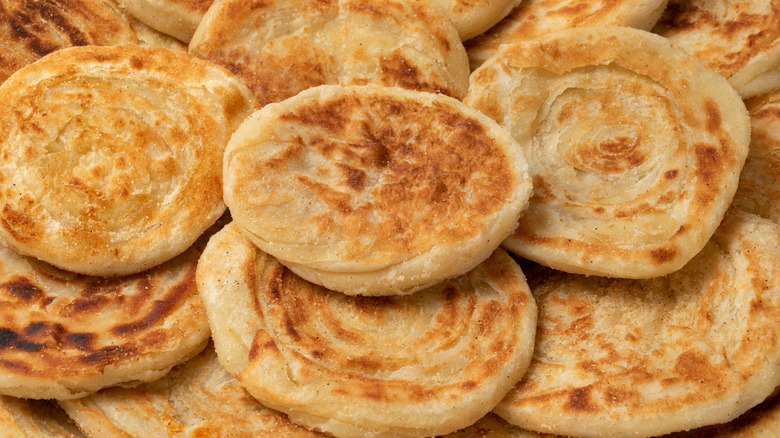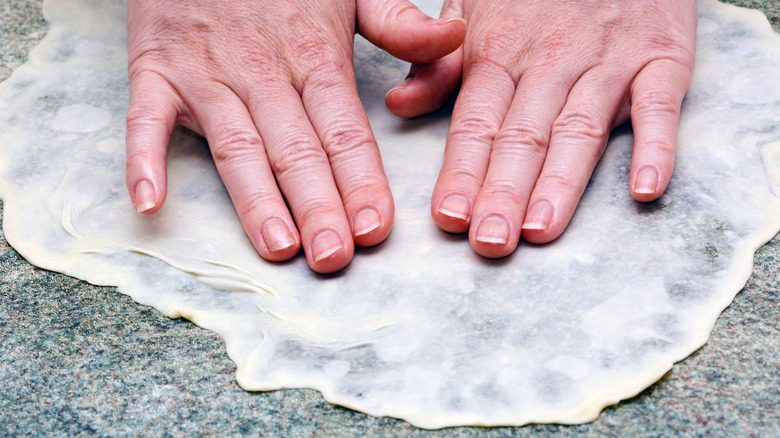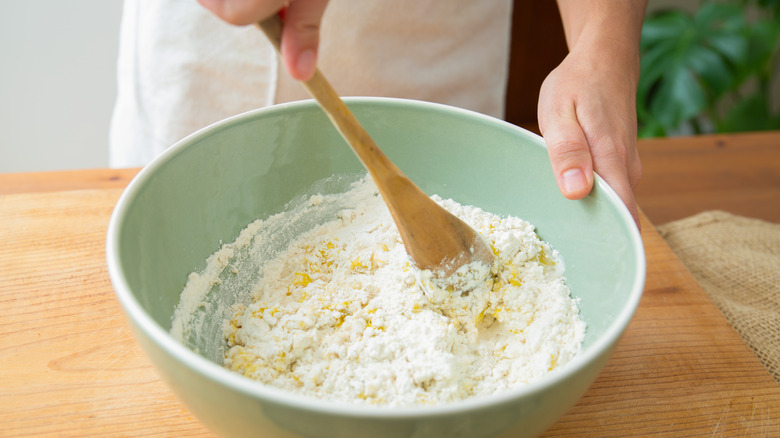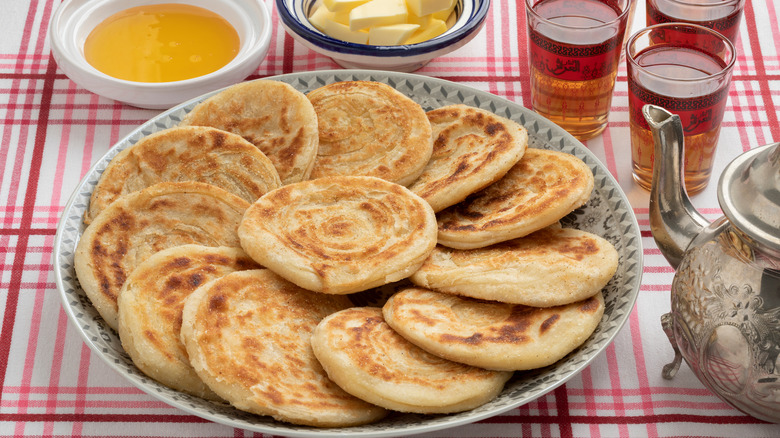Meloui: Morocco's Unique Pancakes
In all their glorious simplicity, nearly every culture on Earth has its own version of pancakes: India has besan chilla, France has crepes, Ethiopia has injera, Venezuela has chachapas, Korea has buchimgae, and China has jianbing, among many others. Even in Morocco, a country with a cuisine that is well-known for its vibrant spices, unique flavor blends, and intricate aromas, pancakes are considered a breakfast food staple. But, just like the pancakes found elsewhere in the world, the sweet breakfast bread known as meloui, or melawi in plural form, wouldn't be Moroccan without having its own unique touch.
In size and shape, Moroccan meloui pancakes are similar to the American style; only extra steps are taken to give them a texture unlike anything else. Unlike traditional pancake batter, which is usually runny and plopped straight on the pan, melawi are made from a pliable, hand-formed dough. Flattened, folded in layers like an accordion, rolled from end to end into a coil, and given time to rise, melawi are both fluffy and flakey, with an ultra-satisfying texture that can be pulled apart between your hands. As with most Moroccan recipes, preparing the meloui will take extra time and consideration — but it always pays off in the end.
How to make the Meloui
In most cultures, pancakes are staples because of their simplicity: just take a starch, add water or milk, maybe an egg or two along with a rising agent, and you have yourself a quick, cheap, and filling meal. But simplicity isn't necessarily a hallmark of Moroccan cuisine — and neither is saving time. Along with the flavors, aromas, and spice blends, Moroccan food is famous for being time-consuming, and melawi are no exception.
Melawi recipes begin as any other pancake recipes do. Only after combining the wet and dry ingredients the dough is transferred to a flat surface and kneaded by hand for about 10 minutes. Stand mixers are totally allowed and, honestly, recommended. You'll want to save all your strength for the next step: folding the dough — a step that's much better shown than told, and Cooking With Alia demonstrates the process perfectly on YouTube.
After dividing your dough, you transfer the pieces one by one to a flat, oiled surface. Then, you flatten the dough by hand until it's virtually transparent, fold it once in half, and then again like an accordion, brushing with melted butter in between. At that point, you will have one long piece of dough. After rolling it from one end to the other to form a coil and leaving it to rise, the dough gets flattened by hand to form a circle and cooked on a pan until golden on each side.
Ingredients
Meloui isn't a health food, nor is it intended to be. So before you start substituting one thing for another, keep in mind that, in order to get meloui right, you'll need an adequate — all be it, borderline excessive — amount of butter and oil. But only because it plays an important role in how the dough is handled and shaped, and with all of the folds and rolls that are involved in preparing meloui, that's important. The same can be said for the use of semolina flour, a type of flour made from durum wheat, which typically composes at least 1/3 of the overall flour mixture or, at minimum, is sprinkled on the dough between folds.
So, yes, just like pasta and couscous, most traditional meloui will contain gluten — but that's because it's what gives it that nice layered, pull-apart effect when you eat it. And, although it can be made vegan at home by just using oil, the meloui you find out and about will also more than likely contain dairy. But that doesn't mean that you won't come across different variations. In fact, depending on what region of Morocco you're in or who made it, meloui can contain different ratios of semolina to flour and fat that gives it a different consistency and texture. It's all based on preference.
How to eat Meloui
Similar to msemen, another type of Moroccan pancake, plates of melawi are traditionally served hot and fresh, usually during breakfast or tea time. As one of the most popular sweet treats in Morocco, meloui is most commonly served with a traditional Moroccan syrup made from butter and honey but may also be served with fruity jam. Although not as common, they can also be found served with savory accompaniments, such as olives, eggs, or salami. Sometimes, they're even known to be stuffed with cheese and meat.
According to Taste of Maroc, the name "meloui" actually comes from the Moroccan Arabic term for "rolled," in reference to the meticulous rolling of the dough that happens during preparation. While it may be a bit time-consuming, the rolling and layering are what give meloui its unique texture — and it's what makes them so much fun to eat. As with many Moroccan foods, melawi are traditionally eaten with your hands, and they're very satisfying to pull apart. Like cinnamon rolls, they uncoil from the outside inward — showcasing the cook's hard work with each bite you take.



